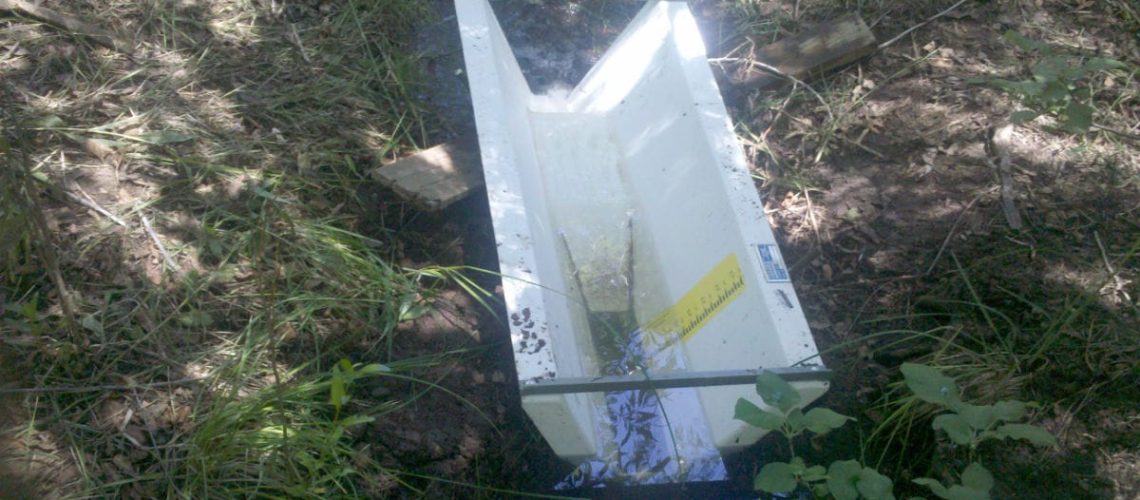Flumes and weirs are great for measuring flow rate, but you’ll still need an actual device to do the measurements themselves. Quite a few different options are available, but one of the most common is the staff gauge. While they may seem straightforward, it’s important to understand how a staff gauge is meant to function in order to get the precise measurements you need. Learn about staff gauge types & styles, to ensure you’re always getting accurate measurements when you use one.
Gauges with Flumes
When you’re implementing a staff gauge in a flume, there are a few factors you’ll need to keep in mind. There is no universal location to put the gauge in a flume. Instead, you’ll have to put it in the proper spot in accordance with the flume’s size and style. The style can also affect what kind of gauge you need for proper measurements. For example, you may need an indirect reading if you have a flume that has slanted walls like a
Trapezoidal or RBC flume.
The exact point of measurement will vary based on the flume, but like all other methods of measurement, the surface of the flow needs to be free from turbulence and foam. While flow conditioning can help with this problem, a stilling well is a popular alternative. You can put a staff gauge in a stilling well, and still get accurate measurements for the flow rate.
Gauges with Weirs
Operating a weir box warrants a different approach to staff gauges, though the placement of the gauge is more often flawed than it is in flumes. It’s all too common to see gauges set on the weir plate itself, but that’s not generally a good spot. The nature of weirs creates a nappe, which in turn causes a drawdown of the flow. This means that the flow will always read under what it actually is.
To account for the discrepancy, staff gauges should always be placed upstream of the weir. Specifically, the staff gauge needs to be placed at least three to four times the maximum anticipated head of the flow. Only then will you be able to take advantage of the pinpoint accuracy that weirs offer. Anything less, and you’ll just be getting a general idea of flow rate.
Staff Gauge Maintenance
While the actual process of reading a staff gauge is fairly straightforward, it is important to make sure the gauge is legible. When they’re set up inflows, all sorts of debris can build up and block the markers on them like vegetative matter, scum, biological growth, and anything else that may find itself in your flow channel.
To make sure everything is functioning properly, you should get in the habit of checking the staff gauge every time you visit the site whether you plan on actually using the gauge or not. The longer you wait to inspect it, the more time growth has to accumulate on it which, in turn, makes it harder to clean.
Staff Gauges from Tracom
Now that you know how staff gauges work, it’s time to get one of your own. That’s where Tracom is happy to help. Our team can help you find the right gauge for your unique open channel flow rate measurement device. Contact us today to get started!



